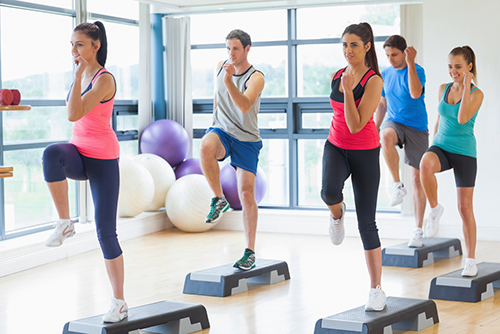
Spring is here and it will soon be summer. Naturally it’s time to get your body in shape. Whether you’re looking to start a new sport; preparing for a holiday or; a special occasion, the reasons are limitless. However, this blog isn’t about why you should exercise, this blog is about what you should consider before you start exercising.
Here are my top 5 tips to starting your fitness programme:
1. Check your fitness level
You are probably thinking you know how fit you are, but what we want to focus on here is
assessing your progression. This will give you a massive motivational boost, so that you can assess your fitness at an aerobic and muscular level, as well as you flexibility and body composition. Some ideas for recording these are:
• your pulse rate before and after walking or running 1 mile
• how long it takes you to walk or run 1 mile
• how many sit ups, pushups or (the dreaded) burpees you can do at a time
• how far you can reach forwards while sitting with your legs straight in front of you
• your body mass index
2. Design your fitness programme for steady progression
Now before you say “I’m going to exercise every day” stop! Planning your fitness or sports
programme properly is the key to steady progression. Rest days are good and needed in order to help your muscles recuperate, but try to train a minimum of 3 days a week.
Here are some points to consider when designing your programme:
• What are your fitness goals? Make sure your goals are clear and easy to follow. It could
be to lose weight or to prepare for a marathon for example. Making sure you are clear on
what you are doing and what you wan to achieve, will allow you to monitor your progress
and keep you motivated when you see the results.
• Make sure you give yourself rest days. This is to not only prevent injury but allow time
for your muscles to change and adapt to the new you.
• Start easy and improve slowly. If you’re a beginner, start easy and make sure you enjoy
it. More than anything else this will allow you to improve in your own time. If your injured
or have a medical condition, make sure you consult a professional so that they can help
design your programme to improve your range of motion, strength, speed and endurance.
• Build activity into your daily routine. Finding the time to exercise can be a challenge, so
the easiest way is to structure it into your lifestyle, so that there are no excuses. For
example; you may want to exercise early in the morning before you start your day.
• Plan to include different activities. This makes exercising so much fun! You can make it
interesting by going from football to swimming or whatever your passion maybe. By cross
training you also reduce the chances of injuring yourself and can increase your general
fitness a lot quicker rather than sticking to a similar gym or fitness routine.
• Put it on paper. If you can see it, it will help you stick to it.
3. The key is your equipment
Start with your footwear. Make sure they match the demands you’re putting your body through or the terrain your planning to run or move on. For example, if your planning to do sprint training spikes are light and stiff to help propel you across the astroturf, whereas running shoes have more shock absorption for long distances to help absorb the impact under your feet.The correct clothing is also essential for support, protection and flexibility and it helps aid your performance. You might want to consider fitness apps to keep you motivated, to keep in fun and to track your improvement.
4. Get Started
DAMN!!! now you are ready to go. When you start to train keep these tips in mind to aid your performance and the beginning of your lifestyle change.
Start slow and build up gradually: well I guess you know the story of the tortoise vs the hare. Be the tortoise, ALWAYS! Give yourself plenty of time to warm up and cool down. A warm up consists of easy moving and stretching until you feel warm and not puffing. Add some dynamic stretches and prepare your body for the activity. For the cool down make it an easy slowdown from your activity and finish off with either static or assisted stretching.
Make your session suit you: if you can’t fit 30 minutes all in all at once. Then try and fit it in throughout your day so you can start with 10 minutes in the morning, 10 minutes midday and 10 minutes in the evening. Shorter but more frequent sessions have aerobic benefits too.
Mix it up: The gym isn’t the only way to get fit and have fun. Here are some of the ideas I have tried just to keep me inspired and interested and healthy.
- Circuits
- Classes
- Salsa
- Kitesurfing
- Wakeboarding
- Snowboarding
- Hiking
- Climbing
- Basketball
- Capoeira
- Ultimate Frisbee
- Taekwondo
- Jujitsu
- Parkour
- Swimming
- Mountain biking etc….
Honestly, the options are endless and you can give yourself a challenge to do something different every weekend.
Listen to your body: If you feel pain, shortness of breath, dizzy or nausea, take a break, there is no hurry to getting fitter and you might be pushing yourself to hard.
You’re human: if you’re not feeling well, then you are allowed to take a day or two off. Trust me it takes more than a week to lose all the fitness you’ve gained
Don’t forget to maintain yourself: the occasional yoga, pilates, massage or sauna session will keep your muscles happy and you’ll be able to get better, easier and quicker if you maintain your body in peak condition using these tips.
5. Monitor your progress
Now you have the baseline for your programme, it’s time to check how much you’ve improved. If you check every month and exercise a minimum of 3 days a week you will gradually see yourself getting better and better. In addition, you can see if you need to add more time or more days to continue to improve. Or, you may be happy to find that your current way of training is meeting your fitness goals. On the other hand, if you feel like you are losing motivation, change your goals, try a new activity, take a friend, or change your fitness classes. When you start to exercise it an amazing decision and you are welcoming a happier and healthier you into your life. It doesn’t have to be overwhelming all consuming. Start small and pace yourself and in time you will wonder how you ever lived without it.
